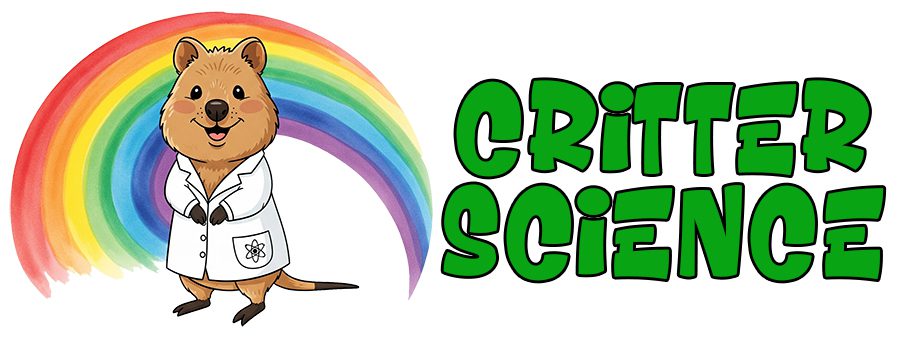- Zoology
- Daily Critter Facts
- For Teachers
- Study Guides
- Diseases & Parasites
- Contact


Animal conservation stands as a critical endeavor, a global imperative that seeks to safeguard the planet’s diverse array of species from the looming threat of extinction. The intricate web of life, woven with countless threads of animal existence, plays a pivotal role in maintaining the delicate balance of ecosystems. Each species, from the majestic elephant to the minuscule insect, contributes to the health and stability of our planet. Therefore, the loss of even a single species can trigger a cascade of detrimental effects, disrupting natural processes and weakening the resilience of entire ecosystems.
The Threats are Many
The threats facing animal populations are multifaceted and deeply intertwined with human activity. Habitat destruction, driven by deforestation, urbanization, and agricultural expansion, stands as a primary culprit. As human populations grow, natural habitats are fragmented and destroyed, leaving animals with limited space and resources. Climate change further exacerbates these challenges, altering weather patterns, disrupting migration routes, and threatening the survival of species adapted to specific environments.
The Never Ending Hunt
Poaching and illegal wildlife trade represent another significant danger. The demand for animal products, such as ivory, rhino horn, and exotic skins, fuels a lucrative black market that decimates populations of endangered species. This illegal trade not only threatens the survival of individual animals but also destabilizes ecosystems and undermines conservation efforts.
Combating poaching and illegal wildlife trade requires a multifaceted approach, involving law enforcement, community engagement, and international cooperation. Stricter regulations, increased penalties, and improved monitoring are essential for deterring poachers and disrupting illegal trade networks. Education and awareness campaigns play a crucial role in changing public attitudes and reducing the demand for animal products.
Further Impacts
Pollution, in its various forms, also takes a heavy toll. Industrial waste, agricultural runoff, and plastic debris contaminate habitats, poisoning animals and disrupting their natural processes.
Protecting Those Who Can’t Protect Themselves
Conservation efforts encompass a wide range of strategies, each designed to address specific threats and protect vulnerable species. Protected areas, such as national parks and wildlife reserves, provide safe havens for animals, allowing them to thrive in their natural habitats. These areas are crucial for maintaining biodiversity and ensuring the long-term survival of endangered species. Captive breeding programs play a vital role in bolstering populations of critically endangered animals. By carefully managing breeding and reintroduction efforts, conservationists can help to recover species on the brink of extinction.
Collaborative Efforts are Needed
Addressing climate change requires global collaboration and a commitment to reducing greenhouse gas emissions. Transitioning to renewable energy sources, promoting sustainable land use practices, and investing in climate-resilient infrastructure are essential steps in mitigating the impacts of climate change on animal populations. Furthermore, the role of local communities in conservation cannot be overstated. Indigenous knowledge and traditional practices often hold valuable insights into sustainable resource management. Engaging local communities in conservation efforts fosters a sense of ownership and ensures the long-term success of conservation initiatives.
The importance of international cooperation in animal conservation cannot be overstated. Many species migrate across national borders, requiring coordinated efforts to protect them. International treaties and agreements, such as the Convention on International Trade in Endangered Species of Wild Fauna and Flora (CITES), provide a framework for regulating the trade of endangered species and promoting conservation collaboration.
The Science Behind Conservation
Scientific research provides the foundation for effective conservation strategies. Studying animal behavior, ecology, and genetics allows conservationists to understand the needs of different species and develop targeted interventions. Monitoring populations and tracking their movements provides valuable data for assessing the effectiveness of conservation efforts. Technology plays an increasingly important role in animal conservation. Remote sensing, GPS tracking, and camera traps provide valuable tools for monitoring wildlife populations and detecting illegal activities.
Teaching the Masses
Zoos and aquariums play a significant role in animal conservation, serving as centers for education, research, and captive breeding. They provide opportunities for people to learn about animals and their habitats, fostering a greater appreciation for wildlife. Modern zoos prioritize animal welfare, providing spacious and enriching environments that mimic natural habitats.
What Can You Do?
Individual actions can also make a significant difference in animal conservation. Reducing consumption, supporting sustainable products, and volunteering with conservation organizations are just a few ways that individuals can contribute to protecting wildlife. Raising awareness about animal conservation issues and advocating for stronger environmental policies can also have a powerful impact.
The Responsibility Falls On All of Our Hands
Ultimately, animal conservation is a shared responsibility, a collective effort that requires the participation of governments, organizations, communities, and individuals. By working together, we can safeguard the planet’s incredible biodiversity and ensure a future where both humans and animals can thrive. The preservation of animal life is also the preservation of the conditions that allow human life to thrive as well.
